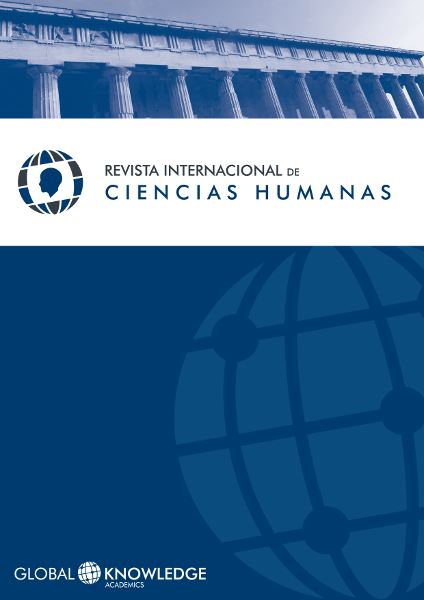The Language and the Built Places
DOI:
https://doi.org/10.37467/gka-revhuman.v2.703Keywords:
Architectural Space, Language, Cognition, Categorization, Innate-LearnedAbstract
If we don't explain the role of language in the construction of places to live, their study will be incomplete; therefore the built space poses the challenge of defining a method of analysis that takes into account the emergence of cognitive processes in human being, of which perception and categorization of objects in space seems to be the most difficult to explain. And here is where the focus on language, from the point of view of the studies of complexity, admits to interpret and explain the evolution of the human capacity of build. In this sense, it is necessary to review the problem of in witch sense it can be said that language is innate or learned, and if the mind is a blank paper at birth, or has a genetic basis and how would be like. We observed the acquisition of language and cognition, and the construction of places to live, as the product of a cultural-genetic legacy. It is necessary to offer a point of view about the relationship between culture-nature, taking built places as a superior order and self-organizing subsystem: the built space
References
Alexander, C. (1981). El modo intemporal de construir . Barcelona: Editorial Gili.
Alexander, C. (2003). “New Directions in complexity. Arising from studies en the field of architecture”. En: http://natureoforder.com/library/scientific-introduction.pdf
Bennett, M., D. Dennett, P. Hacker & J. Searle (2007). Neuroscience & Philosophy. Brain, Mind, and Language . New York: Columbia University Press.
Bertalanffy, L. V. (2009). Teoría general de los sistemas . México: Fondo de Cultura Económica.
Bordieu, P. (2007). El sentido práctico . Buenos Aires: Siglo XXI.
Bordieu, P. y Wacquant, L. (2005). Una invitación a la sociología reflexiva . Buenos Aires: Ed. Siglo XXI
Cavalli-Sforza, L. L. (2000). Genes, pueblos, lenguas . Barcelona: Editorial Crítica.
Fuentes F. J. (2011). “La experiencia cualitativa en el paisaje y el espacio construido”, Bogotá, Revista de Estudios sobre Patrimonio Cultural-Journal of Cultural Heritage Studies, Apuntes 24(2), pp. 166-177.
Giddens, A. (2006). La Constitución de la Sociedad. Bases para la Teoría de la Estructuración. Buenos Aires: Amorrurtu.
Lowe, E. J. (2000). Filosofía de la mente . Barcelona: Editorial Idea Universitaria.
Muntañola Th., J. (1996). La arquitectura como lugar . Barcelona: Ediciones UPC.
Nicolescu, Basarab (2010). “Methodology of Transdisciplinarity Levels of Reality, Logic of the Included Middle and Complexity”, Transdisciplinary Journal of Engineering & Science 1(1), (December, 2010), pp. 19-38. Véase: http://basarabnicolescu.fr/Docs_Notice/TJESNo_1 _12_2010.pdf (Fecha de consulta: 14/03/13). DOI: https://doi.org/10.22545/2010/0009
Pallasmaa, J. (2011). The Embodied Image. Imagination and imagery in Architecture . Italia: Editorial Wiley.
Rapoport, A. (2008). “Las relaciones entre la mente, el territorio y la sociedad desde una perspectiva medioambiental”, Revista Arquitectonics Mind, Land & Society , 15. Barcelona: Ediciones UPC, pp. 33-55.
Rorty, Richard (2000). Filosofía y futuro . Barcelona, Ed. Gedisa.
Searle, J. (2009). La Conciencia. En González, Juliana; Filosofía y Ciencias de la Vida . México: Fondo de Cultura-UNAM, pp. 60-93.
Pollan, Michael (2006). The Omnivore’s Dilemma: A Natural History of Four Meals . New York: Penguin.
Weinstein, Joshua I. (2009). “The Market in Plato’s Republic”, Classical Philology 104, pp. 439–58. DOI: https://doi.org/10.1086/650979
Downloads
Published
How to Cite
Issue
Section
License
Those authors who publish in this journal accept the following terms:
- Authors will keep the moral right of the work and they will transfer the commercial rights.
- After 1 year from publication, the work shall thereafter be open access online on our website, but will retain copyright.
- In the event that the authors wish to assign an Creative Commons (CC) license, they may request it by writing to publishing@eagora.org









